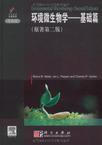环境微生物学
出版时间:2010-1 出版社:科学 作者:(美)迈尔 页数:598 字数:550000
Tag标签:无
前言
环境微生物学的历史可以追溯到对城市废物的处理和处置研究。在第一版的《环境微生物学》中,我们就认识到这门学科的研究领域已经拓展到土壤、水和大气系统,包括土著微生物与有机/无机污染物的相互作用,进入这些系统的病原体的行为,还包括新的微生物及其产物的发现和应用,以造福人类健康或谋得福祉。在第一版问世后的这些年间,有关各种环境下微生物以及群落的知识出现了前所未有的爆炸。因此,在《环境微生物学》第二版中,我们增加了对极端环境以及微生物群落和微生物之间信息传递的章节。类似地,出于对日益增加的人口压力和气候变化的认识,我们新增了室内微生物学、生物恐怖主义,以及全球变化对微生物传染病的影响等章节。微生物可谓无处不在,它们遍布于世界上每一个角落,任何一处你能想象得到的环境中都有这些微小的生命。比如在土壤中,一克土壤就含有数十亿个微生物,并且蕴含着所有与这些微生物相联系的代谢活动。考虑到微生物巨大的生物多样性,可以想象一下,如果要研究地球上每个生物群系中发现的所有微生物的主要组别,需要面对多大的挑战啊。那么不妨再想象一下,要发展合适的策略和方法来利用和操纵它们,又需要面对多大的挑战。其实,这些就是环境微生物学要做的工作。我们邀请您读读这本书,从而开始一段令人兴奋的历险旅程:了解多种多样环境中的不同微生物。本书共有8个部分,循序递进:(一)基础部分,为后面更为专深的章节提供充分的知识背景;(二)微生物环境,包括土壤、水体和大气;(三)关于微生物活性的检测和定量分析,包括培养法、显微观察、生理学方法、分子生物学方法和免疫学方法;(四)微生物与环境的相互影响,从元素的循环到微生物的信息传递再到细菌群落的发育和运动;(五)金属污染和有机污染的微生物修复;(六)水和食物来源的病原体;(七)废弃物的处理和饮用水;(八)城市问题,包括家庭和室内微生物,生物恐怖主义以及风险评估。这本教材是为环境微生物学专业的高年级本科生或研究生编写的,也可以作为对这一领域感兴趣的科学家和工程师的参考书。总体上,本书旨在介绍环境微生物学中重要的微生物、微生物所依赖的不同环境的特性、检测微生物及其活性的方法,最后评价了微生物对人类活动的影响。本书是三位学者共同努力的结果,他们在环境微生物学中的研究领域虽各不相同,却又相辅相成。他们是亚利桑那大学的亲密合作伙伴,有着大量的科研项目,并一起广泛运用先进的跨学科方法研究各种实际问题,如极端环境中的微生物、微生物表面活性剂在生物技术领域的应用、新出现的病原菌的分子检测、微生物和DNA在土壤中的迁移以及微生物的风险评价。这些涉及领域广泛的研究为本书阐明重要的知识点提供了大量例证。三位作者在亚利桑那大学的11位同事也为此做出了重要贡献。
内容概要
本书旨在介绍环境微生物学中重要的微生物、微生物所依赖的不同环境的特性、检测微生物及其活性的方法,还评价了微生物对人类活动的影响。三位作者是亚利桑那大学的亲密合作伙伴,在环境微生物学中的研究领域各不相同,却又相辅相成。这些涉及领域广泛的研究为本书阐明重要的知识点提供了大量例证。多位撰稿人的贡献也使此书在深度和广度上具有延续性,内容上则与当下的研究前沿基本一致。 根据国内读者的需要,导读版分为基础篇和拓展篇,所配光盘包含原著全部彩图。这本教材适用于环境微生物学专业的高年级本科生或研究生,也可以作为对这一领域感兴趣的科学家和工程师的参考书。
作者简介
作者:(美国)迈尔(Raina M.Maier) (美国)Ian L.Pepper (美国)Charles P.Gerba 合著者:刘和 陈坚
书籍目录
前言致谢作者撰稿作者基础篇 第一部分 微生物的基本概念 第1章 环境微生物学绪论 1.1 引言 1.2 历史回顾 1.3 现代环境微生物学 1.4 本书的用途和结构 第2章 微生物类群 2.1 生物分类 2.2 真细菌 2.2.1 细胞膜 2.2.2 细胞质 2.2.3 多糖包被 2.2.4 细胞的附加物 2.2.5 内生孢子 2.2.6 信息传递 2.2.7 新陈代谢 2.3 古细菌 2.3.1 古细菌的生境 2.3.2 古细菌的功能 2.4 真菌 2.4.1 真菌结构 2.4.2 真菌的多样性 2.4.3 生态学重要性 2.5 黏液菌类 2.6 原生动物 2.6.1 原生动物的结构和功能 2.6.2 生理学和生态学上的重要性 2.7 藻类 2.7.1 藻类细胞的结构 2.7.2 生理学和生态学上的重要性 2.8 病毒 2.8.1 病毒的传染特性 2.8.2 原核病毒 2.8.3 真核病毒 2.9 其他生物实体 2.9.1 类病毒 2.9.2 朊病毒 参考文献 第3章 细菌的生长 3.1 细菌在烧瓶纯培养条件下的生长 3.1.1 延迟期 3.1.2 指数期 3.1.3 稳定期 3.1.4 衰亡期 3.1.5 底物浓度对生长的影响 3.2 连续培养 3.3 在环境中的生长 3.3.1 延迟期 3.3.2 指数期 3.3.3 稳定期和衰亡期 3.4 生长质量平衡 3.4.1 好氧条件 3.4.2 厌氧条件 思考题 参考文献与扩展阅读 第二部分 微生物的生长环境 第三部分 检测、计数和鉴定拓展篇 第四部分 微生物的信息传递,活动,以及与环境和营养循环的相互作用 第五部分 有机污染物与金属污染物的治理 第六部分 水源性和食源性病原菌 第七部分 废水处理与消毒 第八部分 城市微生物索引
章节摘录
插图:1.3 MODERN ENVIRONMENTALMICROBIOLOGYIn modern environmental microbiology, pathogens and bioremediation remain fundamental to the field, but in both cases these subject areas have been greatly enhanced through the application of molecular genetics and biotechnology tools. For example, development and assessment of new methods of detection and elimination of pathogens in our water and food supply, as well as the indoor environment we live in today, have become critical to public health with the global growth in population. Arguably, human and environmental hygiene efforts have had the greatest impact on reducing human suffering throughout the past century.This is also true today as we see the evolution of new and more virulent forms of environmentally transmitted pathogens. This has been highlighted by concerns about the spread of SARS and the potential for the rapid spread of avian bird flu. Vaccine development is often not rapid enough to guarantee protection and so the environmental microbiologist must be prepared to develop better methods to reduce or stop the spread of these agents throughout the environment. Continuing outbreaks of norovirus diarrhea on cruise ships has demonstrated how difficult an environ-mentally spread agent can be to control. New strategies are needed, such as the development of self-disinfecting surfaces, environmentally friendly disinfectants, more rapid methods of detecting indicators and pathogens in our environment. In addition, application of risk assessment to target the need for control where it is most effective and better products for the consumer are reducing the risk associated with environmentally transmitted infections.The beginning of this century brought a new task for environmental microbiologists in the area of pathogen detection. The impact of just a few letters contaminated with anthrax spores demonstrated how rapidly a terrorist could disseminate a highly virulent pathogen across an entire region of a nation. It also demonstrated how little we know about the transport, survival, and methods of decontamination of lethal agents that could be used by bioterrorists. National security now depends on the development of methods for detection of select agents in the environment and models to assess their fate and control.New challenges have similarly emerged in the area of bioremediation. New chemicals have been detected in ground and surface waters that serve as our potable water resources. In addition, our ability to detect chemicals has gotten better and more comprehensive. For these reasons we have discovered contamination in previously "clean" sources of water. Further, as society grows, we put increasing stress on water resources. In many parts of the United States, for example, groundwater is currently being used at a faster rate than it is being recharged. Add to this increasing wasted is charges containing biological and chemical contamination that enter our water resources, and it becomes clear that environmental microbiologists face large challenges in this arena. These issues also arise in contaminated soil environments. As the global population increases, land resources are becoming more valuable and communities are encroaching on contaminated sites, including landfills,mine railings sites, and agricultural fields with years of pesticide applications. New strategies are needed in this area to treat sites that contain emerging contaminants, contaminant mixtures, and low levels of contaminants. Applications of risk assessment to target the need for control where it is most effective, and for community education to reduce risks associated with living next to contaminated sites, are also becoming more important. A third important area of environmental microbiology has emerged over the past decade, that of mole culaecology. Molecular ecology as it relates to environment almicrobiology can be defined as investigating diversity in he environment, and mining and exploiting that diversity for new natural products and activities. Molecular-based methodologies are now enabling us to detect, define, and better understand the ecology not only of natural habitats such as soil and water, but also of anthropologic environments such as households, fomites, or municipal wastes.Powerful molecular-based tools are becoming available to allow the examination of microbial communities through analys is of microbial DNA and RNA (PCR, gene probes,DNA sequencing, meta genomics) as well as proteins(proteomics). Such techniques now allow us to search for new microbes in extreme environments such as hot springs,caves, deep-sea thermal vents, and deep subsurface environments. Molecular sequence analysis of community DNA permits a new appreciation of microbial diversity, and also of how microbial communities function and communicate via quorum sensing. This new evaluation of the microbial environment is also affording innovative approaches to the discovery of high value "green" products that can be use din medicine, agriculture, and industry. Examples include new antibiotics and other natural products, plant-growth-promoting bacteria to enhance growth of crops, and new chemicals that can be used as detergents, solvents, surfactants, pesticides, and in food processing.
编辑推荐
《环境微生物学:基础篇(导读版)(原著第2版)》的前言和目录均已译成中文,正文部分保留英文原版。另附江南大学陈坚教授、刘和博士所作的中文导读一篇。章节目录:第一部分 微生物的基本概念第1章 环境微生物学绪论第2章 微生物类群第3章 细菌的生长第二部分 微生物的生长环境第4章 陆地环境第5章 大气微生物学第6章 水环境第7章 极端环境第三部分 检测、计数和鉴定第8章 样品的采集与处理第9章 显微技术第10章 培养方法第11章 生理学方法第12章 免疫学方法第13章 建立在核酸基础上的分析方法……
图书封面
图书标签Tags
无
评论、评分、阅读与下载
用户评论 (总计2条)
- 很好的英文教材和参考书
- 该书只是原著的一部分,只有前200多页,大部分有用的内容"导读版"却删节了,真不知道为什么编辑还将目录将人翻译了!真不知道他是如何想的!!
